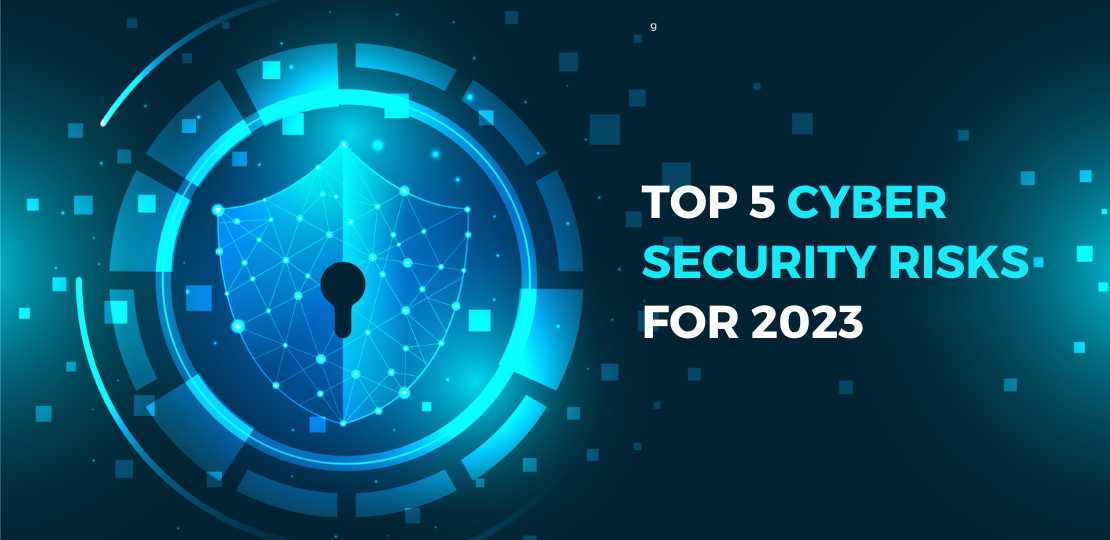Cyber attacks are becoming more frequent and sophisticated, posing a significant threat to individuals and organizations alike. Understanding the top types of cyber attacks and how to protect against them is essential to maintaining the security of your personal and professional information. In this article, we will discuss the top 5 cyber attacks and provide step-by-step guidance on how to be safe from them.
Top 5 Cyber Attacks World is Facing In 2023
Let’s get to know about the top 5 types of cyber threats that are currently facing the world. From ransomware to phishing scams, these threats are prevalent and pose a significant risk to individuals and organizations. Learn how to protect yourself and your sensitive information.
1. Ransomware:
Ransomware is a type of malware that encrypts a victim’s files and demands a ransom payment in exchange for the decryption key. This type of attack can be devastating for individuals and organizations, as it can result in the loss of important data and files.
To protect against ransomware, it is important to take the following steps:
- Software updates: These often include security patches that address known vulnerabilities. By keeping your software and operating systems up to date, you reduce the chances of a ransomware attack.
- Use a reliable antivirus program: Antivirus programs can detect and remove malware before it can encrypt your files. Be sure to choose a reputable antivirus program and keep it updated.
- Regularly back up important data: By regularly backing up your important data, you can restore your files in the event of a ransomware attack. Be sure to store your backups in a separate location, such as an external hard drive or cloud service.
Be cautious of opening email attachments or clicking on links from unknown sources: Ransomware is often spread through phishing emails, which contain malicious attachments or links. Be wary of opening attachments or clicking on links from unknown sources, as they may contain malware.
Also Read: A Beginner’s Guide to Bandwidth: Definition, Working, Importance, and Uses
2. Phishing Attack:
Phishing is a type of social engineering attack that aims to trick victims into revealing sensitive information or installing malware. These attacks often take the form of emails or messages that appear to be from reputable sources, such as a financial institution or a government agency.
To protect against phishing, it is important to take the following steps:
- Be suspicious of unsolicited emails or messages, especially those that ask for personal information or login credentials: Legitimate organizations will not ask for personal information or login credentials through email or message.
- Be cautious of clicking on links or downloading attachments from these messages: Phishing emails often contain links or attachments that lead to malware or phishing websites.
- Use anti-phishing software: Anti-phishing software can help identify and block phishing emails and websites, making it more difficult for attackers to trick you into giving away sensitive information.
3. Cloud Security:
With more and more organizations using cloud-based services, cloud security has become a major concern. To protect against cloud-based threats, it is important to take the following steps:
- Choose a reputable cloud service provider: Not all cloud service providers are created equal when it comes to security. Be sure to choose a provider that has a good reputation for security and offers robust security features.
- Use strong authentication and access controls: To protect your cloud environment, it is important to use strong authentication and access controls. This includes using multi-factor authentication and limiting access to your cloud environment to only those who need it.
- Regularly monitor your cloud environment for any suspicious activity: Keeping an eye on your cloud environment can help you identify and respond to threats quickly. Use tools such as security information and event management (SIEM) to monitor your cloud environment.
4. Internet of Things (IoT) security:
The increasing number of Internet-connected devices, such as smart home devices, has created new security challenges.
To protect against IoT-based threats, it is important to take the following steps:
- Research the device’s security before purchasing: Check for any known vulnerabilities or security issues, and choose devices that have been updated with the latest security patches.
- Use strong passwords: Many IoT devices come with default passwords that are easy to guess. Be sure to change the default password to a strong and unique one.
- Keep your devices updated: As with any technology, IoT devices receive updates to fix vulnerabilities. Make sure to regularly update your devices to the latest firmware version to protect against known vulnerabilities.
- Disable remote management: Unless you need remote management for your IoT device, it is best to disable this feature to prevent unauthorized access.
Also Read: Protecting Your Digital Footprint: Understanding Types and Best Practices
5. Distributed Denial of Service (DDoS) Attack:
A DDoS attack is a type of cyber attack that aims to overload a website or service by overwhelming it with traffic.
To protect against DDoS attacks, it is important to take the following steps:
- Use a DDoS protection service: Many web hosting providers and CDN services offer DDoS protection services to help mitigate the effects of a DDoS attack.
- Use a Content Delivery Network (CDN): CDNs can help distribute traffic across multiple servers, making it more difficult for an attacker to overload a single server.
- Have a response plan: In the event of a DDoS attack, it is important to have a response plan in place. This includes identifying the source of the attack, notifying your hosting provider, and implementing countermeasures to mitigate the attack.
Conclusion
By taking these steps to protect against cyber attacks, you can reduce the risk of becoming a victim of cybercrime. It is important to stay informed about the latest threats and to take proactive steps to protect your personal and professional information.

